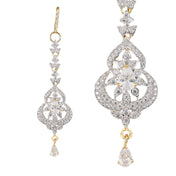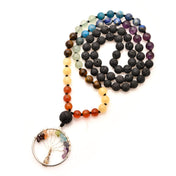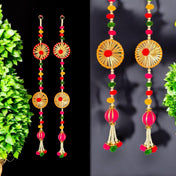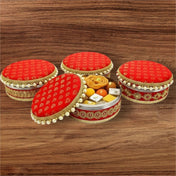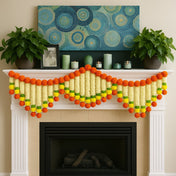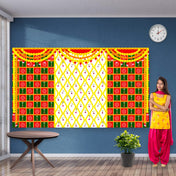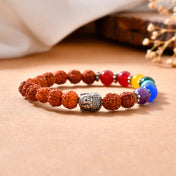Introduction
Indian weddings, often referred to as desi weddings, are vibrant and elaborate celebrations that capture the heart of diverse cultural traditions. These events are not only about the union of two individuals but also a grand display of familial bonds, community spirit, and rich heritage. The global appeal of Indian weddings lies in their colorful ceremonies, intricate rituals, and the joyful atmosphere that envelops them.
Key Features of Indian Weddings:
- Multi-Day Celebrations: Spanning several days filled with unique rituals.
- Cultural Significance: Each ceremony is steeped in meaning, reflecting values and traditions.
- Festive Atmosphere: A blend of music, dance, and laughter creates an unforgettable experience.
In this article, we will explore the heartwarming traditions that make Indian weddings truly stunning. From pre-wedding rituals like the tilak and haldi to the vibrant post-wedding receptions, each element plays a vital role in creating a tapestry of love and unity.
One such element is the varmala, a wedding garland exchanged by the bride and groom symbolizing their acceptance of one another. These garlands come in various styles and colors, such as artificial red roses or pink roses.
Join us as we delve into these cherished customs that continue to enchant couples and guests alike around the world. The elephant ceramic statues often serve as wedding favors, embodying good luck and prosperity. Additionally, we will also touch upon the significance of having a beautiful backdrop for the wedding ceremonies which adds an extra charm to the overall decor.
From the pre-wedding rituals like the tilak and haldi to these stunning elements that adorn Indian weddings, each aspect plays a vital role in creating a tapestry of love and unity.
Pre-Wedding Rituals
Indian weddings are filled with colorful pre-wedding rituals that bring two families together. One of the most important ceremonies among these is the Tilak Ceremony.
Tilak Ceremony
The tilak ceremony marks a formal acknowledgment of engagement and is a cherished tradition in many Indian communities. During this event, the groom's family visits the bride's home to bless her. This visit often involves:
- Ceremonial Offerings: The groom's family brings gifts, sweets, and other tokens of goodwill.
- Blessings: Elders from both families exchange blessings and prayers for the couple's future happiness.
- Ritualistic Makeup: A tilak (a mark made with colored powders) is applied to the groom’s forehead as a symbol of his commitment.
This ritual emphasizes respect and bonding between families, setting a positive tone for the upcoming celebrations.
Following the tilak, several other pre-wedding ceremonies take place, each with its unique charm:
- Haldi Ceremony: Turmeric paste is applied to both the bride and groom, serving as a beautifying agent and symbolizing purification before their sacred vows. Ganesh designer supari decorative are often used in this ceremony as part of the traditional rituals.
- Mehndi Ceremony: Intricate henna designs adorn the bride's hands and feet, with each pattern carrying deep symbolism representing joy and beauty.
- Sangeet: Families come together through music and dance in this lively celebration, fostering unity and creating cherished memories that resonate through generations.
Each pre-wedding ritual contributes to an atmosphere filled with love, joy, and cultural richness.
As part of these rituals, items like mindhol rumal gujrati wedding handkerchiefs may be used during ceremonies such as the Tilak or Haldi.
When it comes to wedding day traditions like exchanging garlands during the Varmala ceremony, artificial pink or velvet red rose garlands are popular choices among couples. Each pre-wedding ritual contributes to an atmosphere filled with love, joy, and cultural richness, making Indian weddings unforgettable experiences for all involved.
Haldi Ceremony
The Haldi Ceremony is a colorful and meaningful ritual that takes place before the wedding celebrations. During this ceremony, both the bride and groom have turmeric paste applied to them, symbolizing purification and beauty. The bright yellow color of turmeric represents good fortune, energy, and happiness, creating a festive atmosphere for the upcoming events.

Cultural Importance
- Acts as a protective barrier against negative energies.
- Represents the blessings of family and friends, enhancing the couple's beauty before their big day.
Surrounded by laughter and music, family and friends come together to celebrate this happy occasion. The haldi ritual often turns into a fun-filled experience, where applying turmeric can lead to playful antics and unforgettable moments. As everyone participates in this lively celebration, it strengthens bonds and makes the haldi ceremony an essential part of Indian weddings that brings joy and excitement before the couple's union.
Mehndi Ceremony
The mehndi ceremony is a cherished pre-wedding ritual that showcases the intricate art of henna designs, symbolizing joy and beauty. As the bride gathers with family and friends, skilled artists adorn her hands and feet with elaborate patterns, each telling a unique story.

Key aspects of the mehndi ceremony include:
- Symbolism: Henna represents love, happiness, and auspiciousness in Indian culture. The darker the henna stain, the stronger the bond between the couple is believed to be.
- Celebration of Togetherness: This event fosters an atmosphere of laughter and camaraderie, as loved ones come together to celebrate the bride-to-be's upcoming journey.
- Connection to Other Rituals: The mehndi ceremony often follows the haldi ceremony, creating a beautiful transition into further celebrations like the lively sangeet, where music and dance take center stage.
The blend of art, culture, and emotional connections during this ceremony makes it an unforgettable component of Indian wedding festivities. To enhance this special occasion, incorporating elements like lotus backdrop for traditional decor or gifting unique items such as ghungroo bangles can add a memorable touch to the celebrations.
Sangeet
The sangeet is a lively celebration that plays a crucial role in Indian weddings, following the tilak ceremony, haldi ceremony, and mehndi ceremony. This pre-wedding ritual is more than just a party; it represents the joyous coming together of two families.
- Music and dance are at the center of this gathering, bringing people closer and creating lasting memories.
- Traditionally, family members perform songs and choreographed dances, showcasing their talent and love for the couple.
- The atmosphere is filled with laughter, excitement, and anticipation for the wedding day.

The sangeet serves as an emotional bridge, breaking down barriers between families and encouraging unity through shared joy. Each performance tells a story, weaving together familial bonds while celebrating love in its most festive form. This vibrant event sets the tone for the upcoming marriage, creating an unforgettable experience filled with cultural richness and heartfelt connections.
Wedding Day Customs
Baraat
The baraat marks a spectacular entry that captivates everyone present. This vibrant procession signifies the groom's arrival to claim his bride, enveloping the celebration in an atmosphere of joy and excitement.
1. Musical Extravaganza
Accompanied by lively music, the baraat includes traditional instruments such as the dhol (drum), creating a festive rhythm that invites guests to dance along. The streets become a stage where friends and family showcase their moves, fostering a sense of unity and connection.
2. Colorful Attire
Participants often wear traditional attire, enhancing the visual appeal of this desi wedding spectacle. The groom typically dons an ornate sherwani, adorned with intricate embroidery, while guests showcase their cultural heritage through vibrant colors and styles.
3. Symbolic Journey
The baraat is not merely a procession; it symbolizes the merging of two families. As the groom rides in on a decorated horse or car, he is celebrated as he embarks on this significant journey toward marital life.
The grand entrance culminates at the mandap, an intricately designed canopy where sacred rituals will unfold. This sacred space holds profound significance in Indian weddings, serving as the focal point for various ceremonies that bind the couple together.
As guests gather around, anticipation builds for other customs like the jai mala, where floral garlands symbolize acceptance between the bride and groom. Each ritual enriches the tapestry of love and tradition woven throughout this unforgettable day.
Additionally, wedding favors play a significant role in these celebrations. Customised items like these hena gift tags serve as memorable tokens for guests, reflecting the personal touch often seen in desi weddings.
Mandap Ceremony
The mandap is an important part of Indian weddings, representing the coming together of two families. This beautifully decorated canopy symbolizes the couple's new home and the sacredness of their marriage.
Here are the key elements of the mandap ceremony:
- Cultural Significance: The mandap represents a heavenly space where blessings from above are showered upon the couple.
- Rituals Under the Mandap: Important ceremonies like the jai mala (exchange of garlands) and tying of the mangal sutra (sacred necklace) take place under this structure.
- Mangal Pheras: The couple walks around the sacred fire seven times, reaffirming their promises and devotion to one another.
This lively setting not only adds to the beauty of a desi wedding but also strengthens the spiritual bond between the bride and groom, signifying their entry into married life.
Exchange of Garlands (Jai Mala)
The jai mala ceremony is a beautiful and symbolic moment during a desi wedding, representing the couple's acceptance of one another. This ritual takes place after the groom’s dramatic arrival during the baraat and under the sacred mandap.
Symbolism
The exchange of floral garlands signifies mutual respect and commitment. Each garland, typically made from fresh flowers, embodies love and beauty.
Significance
As the couple drapes the garlands around each other's necks, it serves as a public declaration of their union, aligning their energies and intentions for the journey ahead.
This heartfelt act not only enhances the visual splendor of the event but also reinforces cultural values of acceptance and partnership. Following this enchanting moment, the couple prepares to participate in further rituals such as the tying of the mangal sutra and the sacred mangal pheras, deepening their connection through shared vows.
Mangal Sutra and Mangal Pheras
The wedding day is filled with colorful rituals, each with its own cultural meaning. Among these, the mangal sutra and mangal pheras are especially important symbols of love and commitment.
Mangal Sutra
This sacred necklace, typically adorned with black beads and gold, serves as a powerful emblem of the bride's marital status. The groom bestows the mangal sutra upon the bride during the ceremony, signifying his promise to protect and cherish her. It is more than an accessory; it represents the bond that ties the couple together in both spirit and tradition.
Mangal Pheras
Following the exchange of the mangal sutra, the couple engages in a pivotal ritual known as mangal pheras. This involves taking seven steps around a sacred fire, each step symbolizing a vow they make to one another. The fire acts as a witness to their promises, which encompass love, fidelity, strength, and respect.
During this ceremonial dance around the flames, families often gather under the mandap, creating an atmosphere filled with joy and reverence. Each lap signifies important aspects of their partnership:
- Nourishment
- Strength
- Prosperity
- Family values
- Friendship
- Loyalty
- Eternal love
These rituals not only solidify the couple's commitment but also weave together their families' histories and futures, painting a picture of unity within diversity that exemplifies a true desi wedding.
An essential part of these ceremonies often includes traditional items like a white marble kalash decorated coconut used during wedding shagun or pooja rituals.
Post-Wedding Celebrations and Cultural Significance
Indian weddings go beyond just the ceremony. They include grand receptions that often feel like Bollywood-style parties. These events are known for:
- Lavish Decor: Venues decorated with beautiful flowers and sparkling lights create a magical atmosphere.
- Gastronomic Delights: A wide variety of food options showcases the rich diversity of Indian cuisine, delighting guests with flavors from different regions.
The celebrations also feature traditional games that bring people together, creating a sense of community and happiness. Married women offer special blessings as part of the festivities, symbolizing their support and good wishes for the newlyweds' journey.
Cultural performances add energy to the celebrations, making them even more vibrant. Guests can expect to see:
- Dance Performances: Traditional dances like Garba or Bhangra might take center stage, encouraging everyone to participate.
- Musical Acts: Live music can elevate the celebration, featuring Bollywood hits that appeal to guests of all ages.
Importance of Indian Wedding Attire
Colorful clothing is a defining feature of Indian weddings, especially highlighting the bride's colors. Brides often wear exquisite lehengas or sarees with intricate embroidery, while grooms complement them in stylish sherwanis or kurtas. This display of colors not only represents cultural heritage but also adds to the festive atmosphere.
Family Involvement and Symbolism
Family plays a crucial role in these celebrations. Each family member has an important part to play, strengthening relationships and contributing to the overall happiness surrounding the couple's union. Every ritual performed during the festivities holds deep meaning, symbolizing unity and offering protection against negative energies.
Such traditions highlight how Indian wedding celebrations are not just personal unions but also communal experiences that blend love, joy, and cultural richness.
One significant ritual is the Pithi ceremony, where special haldi sticks are used for blessings. The use of designer supari decorative items during pooja ceremonies further enriches these cultural practices. The Ganesh designer supari serves as a symbol of good fortune in these rituals.
Finally, no wedding is complete without the beautiful varmala garlands exchanged by the bride and groom, representing their acceptance of each other in this sacred bond.
Guest Participation in Indian Weddings
Indian weddings are known for their large guest lists, a reflection of the cultural emphasis on community and family. In these joyous celebrations, inviting extended family and friends is not just customary but a way to honor relationships and shared traditions. The guest list often includes:
- Immediate family members
- Extended relatives
- Close friends and colleagues
This practice fosters a sense of belonging and strengthens familial ties, ensuring every significant figure in the couple's lives is part of their special day.
Cultural expectations dictate that guests participate actively in the festivities, embracing the communal spirit of a desi wedding. Attendees engage in rituals, share blessings, and partake in traditional games. The atmosphere encourages everyone to celebrate together.
Respect for elders plays a crucial role during ceremonies. Traditional practices discourage public displays of affection, emphasizing propriety and reverence towards senior family members. This decorum highlights the importance of maintaining harmony within the gathering while allowing heartfelt moments to unfold in a respectful manner.
Such customs contribute to the vibrant tapestry of an Indian wedding, where every detail speaks to love, unity, and cultural pride. A significant aspect of these weddings is the use of Varmala or wedding garlands, which symbolize acceptance and respect between the bride and groom. These garlands can be beautifully designed with various motifs, such as those offered by LoveNspire, known for their high-quality materials.
Moreover, the decorations play a vital role in setting the tone for these grand celebrations. From intricate floral arrangements to stunning backdrops, every element is carefully curated to create an unforgettable experience. LoveNspire's exquisite collection offers a variety of options for those seeking to elevate their wedding decor.
Indian weddings are not just about the union of two individuals; they are grand celebrations filled with love, respect, and vibrant cultural traditions that bring together families and communities.
Conclusion
The true beauty of Indian weddings lies in their ability to bring people together, creating celebrations that resonate across cultures. These events are not just personal unions but also showcases of rich traditions that reflect the diversity and vibrancy of Indian heritage.
Every moment spent at a desi wedding is filled with meaning, symbolizing love, respect, and cultural pride. From the elaborate pre-wedding ceremonies to the joyous post-wedding receptions, each aspect contributes to creating unforgettable memories.
As these heartwarming traditions continue to amaze the world, they foster connections that go beyond geographical boundaries. The authenticity and warmth of Indian weddings invite everyone to join in a celebration filled with laughter, love, and shared stories—a true testament to the beauty of cultural unity.











